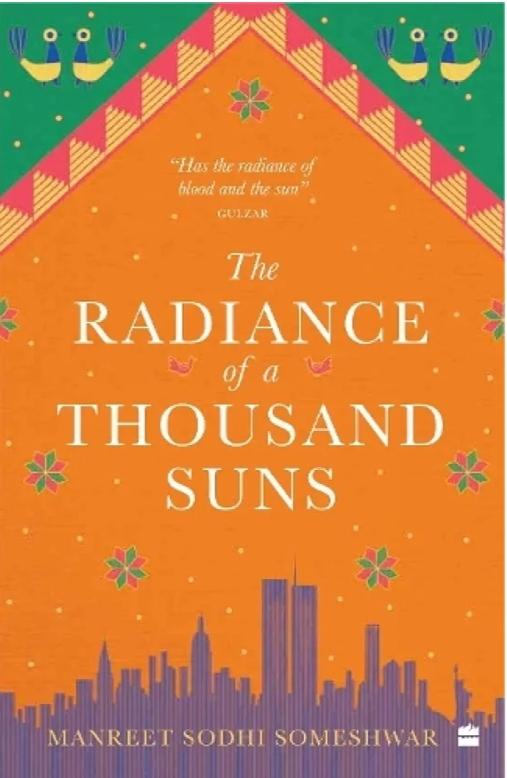Summary/The Radiance of a Thousand Suns
Summary/ The Radiance of a Thousand Suns
Author :Manreet Sodhi Someshwar
Subject: Interweaving the epic Mahabharata, the poetry of Bulleh Shah, and the legend of Heer, The Radiance of a Thousand Suns is a novel about the mythic and the intimate, about stories on tapestry and mobs that recur, about home and love and history and those heartbreaking moments when they all come crashing together.
Summary
The book opens in Ferozepur Civil Hospital (Punjab state, India) in 1977 the year of forced sterilizations drive under Indira Gandhi’s government with the birth of Niki and death of her mother, Roop. Someshwar then builds Niki’s journey, threading in her grandmother Dadima, her aunt and guardian Nooran, and Jyot.The story, narrated in parts by Jyot, builds upon her tragedy as a witness to those twin horrors; she chooses to bury the violence, never letting on how it affected her. Jyot’s story begins in the summer of 1947: as her family’s lone survivor she escapes ethnic cleansing in Hussainiwala (Pakistan) and ending up in Machhiwara (India), adopted by an elderly couple as a foster child. In her new life, the past ceases to exist, as she embraces the present, gets happily married and has four children. It is the tragedy of the 1984 riots, where she loses her husband and children, and miraculously survives again, that forms the keystone of the book.
Jyot is a mystery how did she survive that night when the mob attacked her house? Why did she never tell her story? a mystery that Niki recognizes as critical to her book, and central to the countless untold stories of other women which they “have not been allowed to tell, which they have not been permitted to mourn aloud, which they must keep hidden within themselves.” Niki moves from Chandigarh to Kolkata, to Hong Kong and finally New York, where she finally finds Jyot, who has built silence as a defense against a world that has mistreated her.
Someshwar’s strength lies in her acute attention to detail from the aroma of choori that evokes warm memories in Jyot’s mind but also elicits memories of trauma, to Nooran’s phulkari embroidery that acts as her life’s canvas.Building the story are also episodes of gender discrimination and violence in Indian society and how those affect women’s freedoms and life choices.Someshwar highlights them all, from public sexual harassment, sex-selective abortion, to glaring misconduct against women during legal proceedings, a litany of issues that can on occasion overwhelm the readers and digress from the core plot of Jyot’s life.
Yet the book is, in essence, about the healing power of storytelling amid violence.Nooran embroiders her stories on the only piece of cloth that is her connection to her lost family, Dadima documents stories of violence survivors, Jyot rebirths her life story to Niki, and Niki threads it all together as her journey.
Someshwar structures the book around parallel references to the epic Mahabharata, and its central female character Draupadi, to emphasize the intensity of patriarchy rampant in Indian society since ancient ages.These reflections are explicit.

